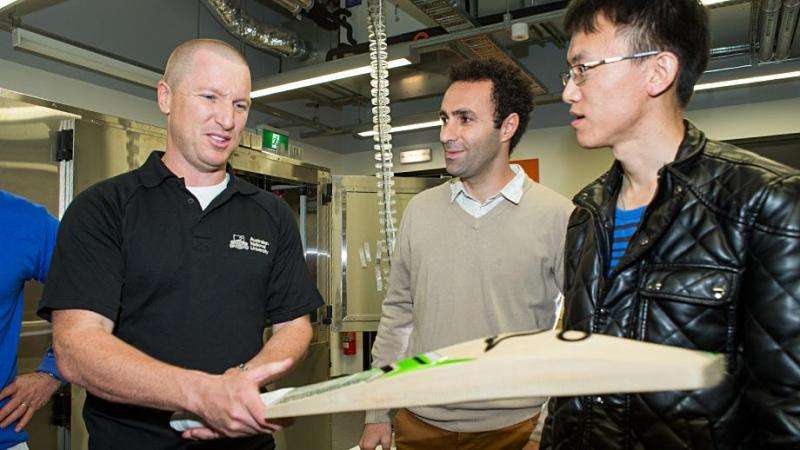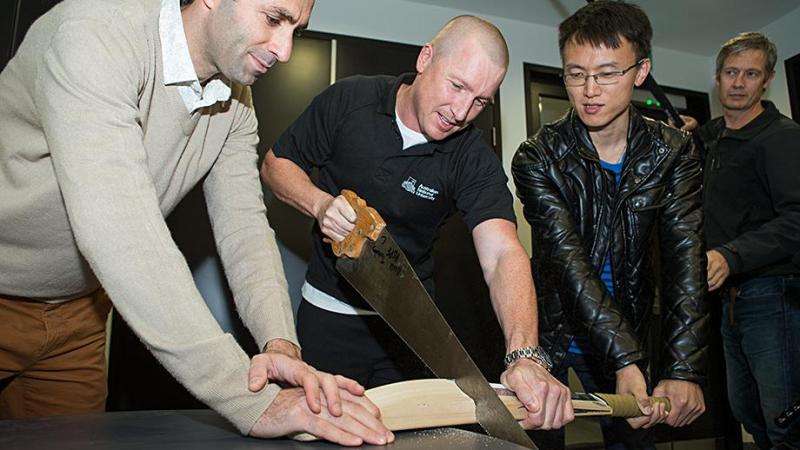Brad Haddin with Dr Mohammad Saadatfar and PhD student Jin Tao.
Scientists from the ANU have sought the advice of Australian wicketkeeper Brad Haddin for their high-technology research into cricket bats.
ANU physicists are for the first time studying English willow at the cellular level, to help them understand what makes a top-quality bat and to work out if other types of wood might one day rival the legendary performance of willow.
Haddin, who is preparing for the upcoming test series against the West Indies and Australia's defence of the Ashes in England, visited the research lab to give his expert opinions on bat quality.
"It's great to be back at the University where I started my cricket career, and to make a contribution to a research project like this," Haddin said.
"It is good to be able to contribute to maybe the perfect cricket bat as well."
Haddin, who played for ANU cricket club in the 90s, tested an English willow bat and then one of Kashmir willow, which is considered to be an inferior bat material. After hitting a number of balls he sawed one of the bats in half to kick off the scientists' sample preparation.
The willow samples will be analysed with an extremely accurate CT scanning technique developed for material research at ANU, and processed by the NCI supercomputer.
Top quality bats are made from the female of only one particular species of English willow tree.
All in the name of science... Credit: Stuart Hay
Lead scientist Dr Mohammad Saadatfar, from ANU Research School of Physics and Engineering, said the team will examine the cellular structure of the wood to unlock the secrets of willow's success as a light and strong bat material.
"We would love to find an alternative to English willow which would make top quality bats more accessible for kids in developing countries," he said.
"There is no reason why every kid in the world shouldn't play with a top quality cricket bat."
Dr Saadatfar and PhD student Jin Tao have teamed up with wood scientist Professor Phil Evans from University of British Columbia for the project. They will scan the bat samples before, during and after stress tests to find out why cricket balls rebound so well from willow bats.
"It's immensely complex. Willow is porous, with criss-crossing fibres that give it the mechanical strength required for withstanding its own weight as well as the wind," said Dr Saadatfar.
"Willow has pockets of air trapped inside the cells, which deform elastically when the cricket ball hits it, giving it unique resilient properties.
"It's an amazingly beautiful system."
Haddin said the research could give Australian cricketers the edge over their rivals.
"I've just put in an order for a bat for all of our top order, so we should be right for the Ashes. We're going to use science to try to retain those Ashes," he said.
Provided by Australian National University
























